「嘤嘤嘤glish」Grammar part 1
嘤嘤嘤...
请注意,本文编写于 1048 天前,最后修改于 1048 天前,其中某些信息可能已经过时。
How to use “to” before an “-ing” verb
In this lesson, I explain how and when we use to before a verb with the -ing ending. The use of to before an -ing verb is not always correct. But it is correct in a particular case to express an emotion or action happening in the present referring to a past or future event. If this sounds complicated, have no fear! It is a simple structure once you understand how it works. And if you do our quiz at the end, you will get used to using this concept in no time!
Teacher: Emma Course Link: https://www.engvid.com/english-grammar-how-to-use-to-before-an-ing-verb/
Any time you have a preposition between the first verb and the second, you are going to use "ing". A preposition is a word like "for", "to", "about", "toward", "up", "down", "in", "out", etc.
Example:
- Thank you for helping me.
- I'm interested in learning English.
If we have two words, and these are verbs without prepositions, they will be either verb with a second verb ending in "ing", or a verb plus the second verb beginning in "to".
Example:
- I enjoy watching / fishing.
- I started eating my food.
- I decided to watch my TV.
- I want to eat ice-cream.
Look at this example:
I look forward <u>to</u> meet<u>ing</u> you.
The first verb is "look forward to", the second verb is "meeting". In this case, "to" is acting as a preposition, and it is a part of "look forward", "look forward to" is a phrasal verb. You can't say "I look forward meeting you".
Example:
- I look forward to ice-cream.
- I hope to ice-cream. (error) / I hope to eat ice-cream. (right)
- You will get used to living here.
- Judge Judy objects to lying.
- I resorted/confessed to stealing.
- I opposed to living in Antarctica.
- I am committed to working hard.
- I am addicted to shopping.
Describing people in English: BE or BEING?
Do you know the difference between he is nice and he is being nice? This small change makes a huge difference! In this video, you’ll learn how “be” and “being” can either express an overall personality, or a current behavior. The English language is full of small changes which can alter the meaning of a sentence completely. But don’t worry! I’ll explain how be and being differ from each other, and will teach you to use them correctly. You’ll have a chance to see many example sentences, and we’ll do some practice exercises together. By the time you finish this easy lesson, I’m sure you’ll be able to score 100% on the quiz!
Teacher: Emma Course Link: https://www.engvid.com/describing-people-in-english-be-or-being
Example:
The boy is naughty. VS The boy is being naughty.
"The boy is naughty." means what we really are saying the boy is usually bad, it's a part of his personality, it's who he is.
That's a little bit different than: "The boy is being naughty." In this case, we're just looking at a behaviour or an action. The boy usually a good boy, maybe he usually does what his parents tell him to, he listens to his teachers, he's a good boy. But one day he is acting a certain way, his actions are naughty, his behaviour is naughty. So you can make a difference:
The boy is naughty. (a personality characteristic of boy.)
The boy is being naughty. (a temporary behaviour of boy.)
Example:
- I'm
being badmeans: I'm doing something bad right now, but I'm usually good. - John
is not nicemeans: John is not a nice person. It's a personality characteristic of John. - Kyle is
being weirdmeans: Kyle is doing something weird at the moment, but he usually is not weird. Gail is usually a very honest woman, but yesterday she lied to her boss.means Gail was being dishonest.
How to use “GET” like a native English speaker
Want to improve your conversational English? Use this easy word to sound like a native speaker! When we speak casually in English, we replace many verbs with the verb get. If you ever use English in social situations, doing this will make your spoken English sound so much more natural! The best part about making this change, is that you probably already know how to use the verb get. In this lesson, I’ll teach you some of the most common verbs you can replace with get.
Teacher: Ronnie Course Link: https://www.engvid.com/how-to-use-get-like-a-native-english-speaker/
slang: 俚语, tan: 棕色
To sound more informal, you can change many verbs to the verb "get".
Example:
- I
receivedgot a letter from my boss. - I left work at 6:00 and
arrivedgot home at 7:30. - He didn't laugh because he didn't
understandget the joke. - She's
becominggetting angry. - His wife
boughtgot train tickets online. - She wants to
developget a tan this summer.
Learn English Tenses: FUTURE PERFECT
Learn all about the FUTURE PERFECT tense (将来完成时)(“I will have graduated”; “I will have spoken”) in this advanced English grammar class. Using this tense correctly shows that you can communicate at a very high level of general, academic, or professional English. We’ll cover structure, usage, spelling, contractions, questions, short answers, past participles(分词), irregular verbs, pronunciation, and common errors. We’ll move forward step-by-step and practice together, so you understand how to think in English. Speaking or writing in this tense can definitely get you a higher score on your IELTS or TOEFL! When you’re ready, you can move forward by watching the next class in our engVid English tense series, which is the future perfect continuous tense. Congratulations – you’ve made amazing progress in your English!
Teacher: Rebecca Course Link: https://www.engvid.com/future-perfect/
FUTURE PERFECT is the action will be completed before a specific time in the future, or before another action in the future. So we can use future perfect tense in two ways.
Regular verbs:
If the verb already ends with an e, then we don't need to add -ed, we just add -d.
If you have a word that ends, a verb, actually that ends with a -y, and before the -y you have a consonant(辅音), which means any other which is not a vowel, a vowel is A,E,I, O,U. But if you have a -y, and before the -y you. I have a consonant like here: try, right? It ends with y, and before it is a consonant, then what we do is we cancel the -y and add -ied. So, try becomes tried. Study becomes studied.
And the last pattern that we can kind of see, or one of the main patterns, is for verbs that end with what's called a c-v-c pattern. So, "c" stands for consonant and "v" stands for vowel. So, we look at the verb from the end. Let's look at this one, starts with a c at the end, then we have a vowel, and then another c for consonant, right? C-v-c. So, when you see a verb like that, when we look at it from the end and it has this pattern, then you double the last letter. So, ship becomes shipped. They will have shipped your order, right?
Irregular verbs:
By this time next year, she will have become a doctor.(become - became - bocome)
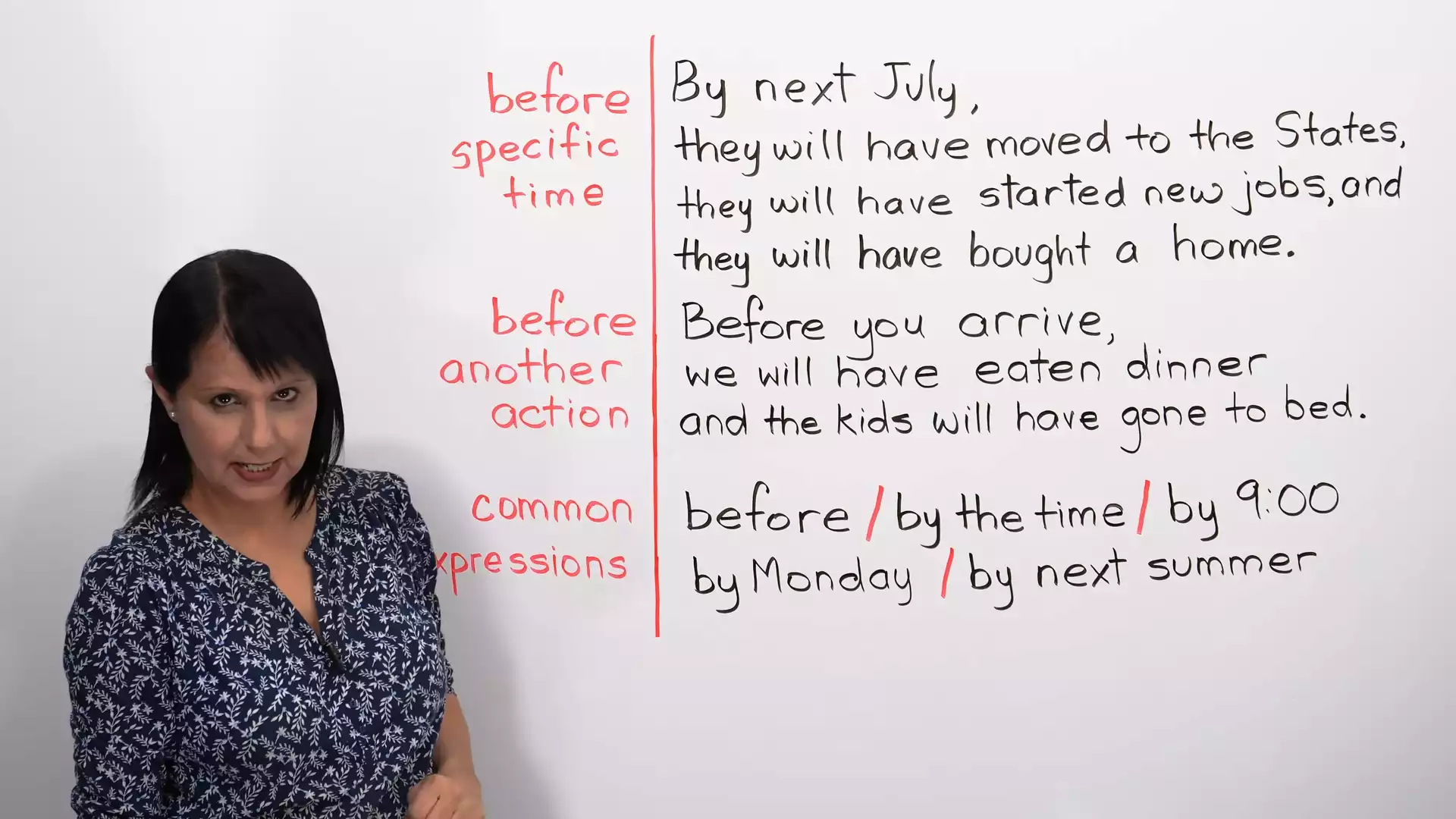
Class Notes
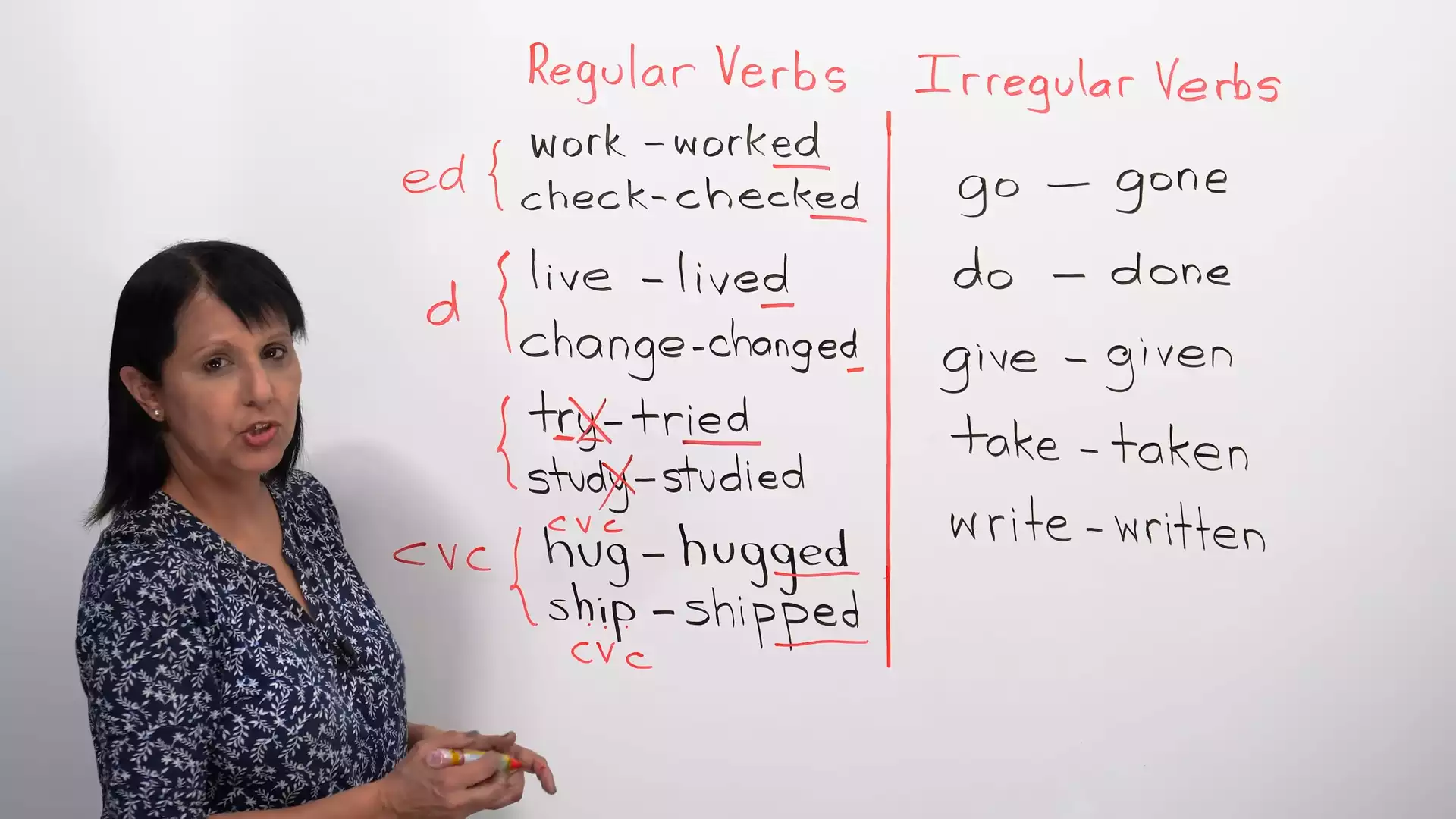
Class Notes
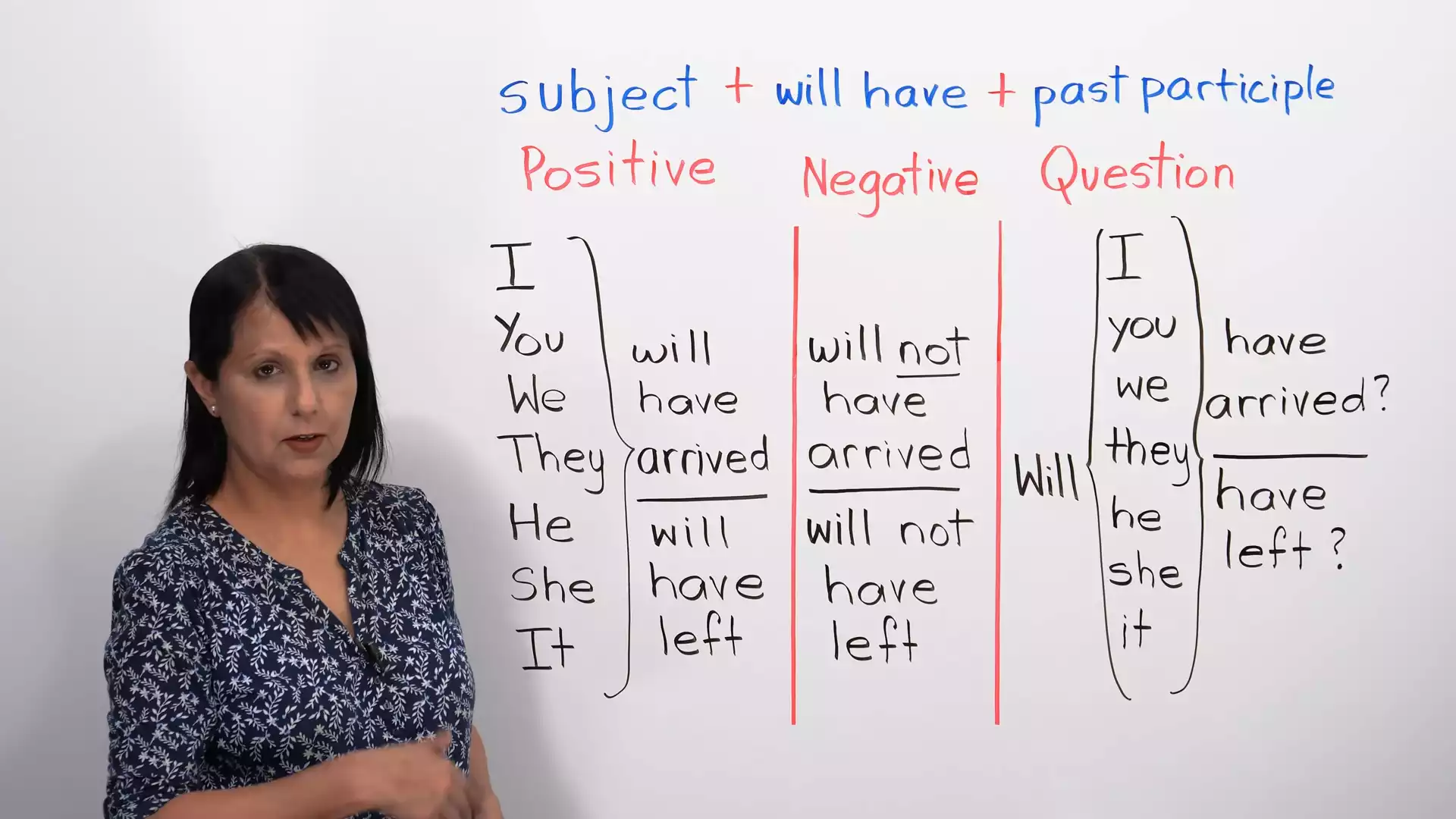
Class Notes
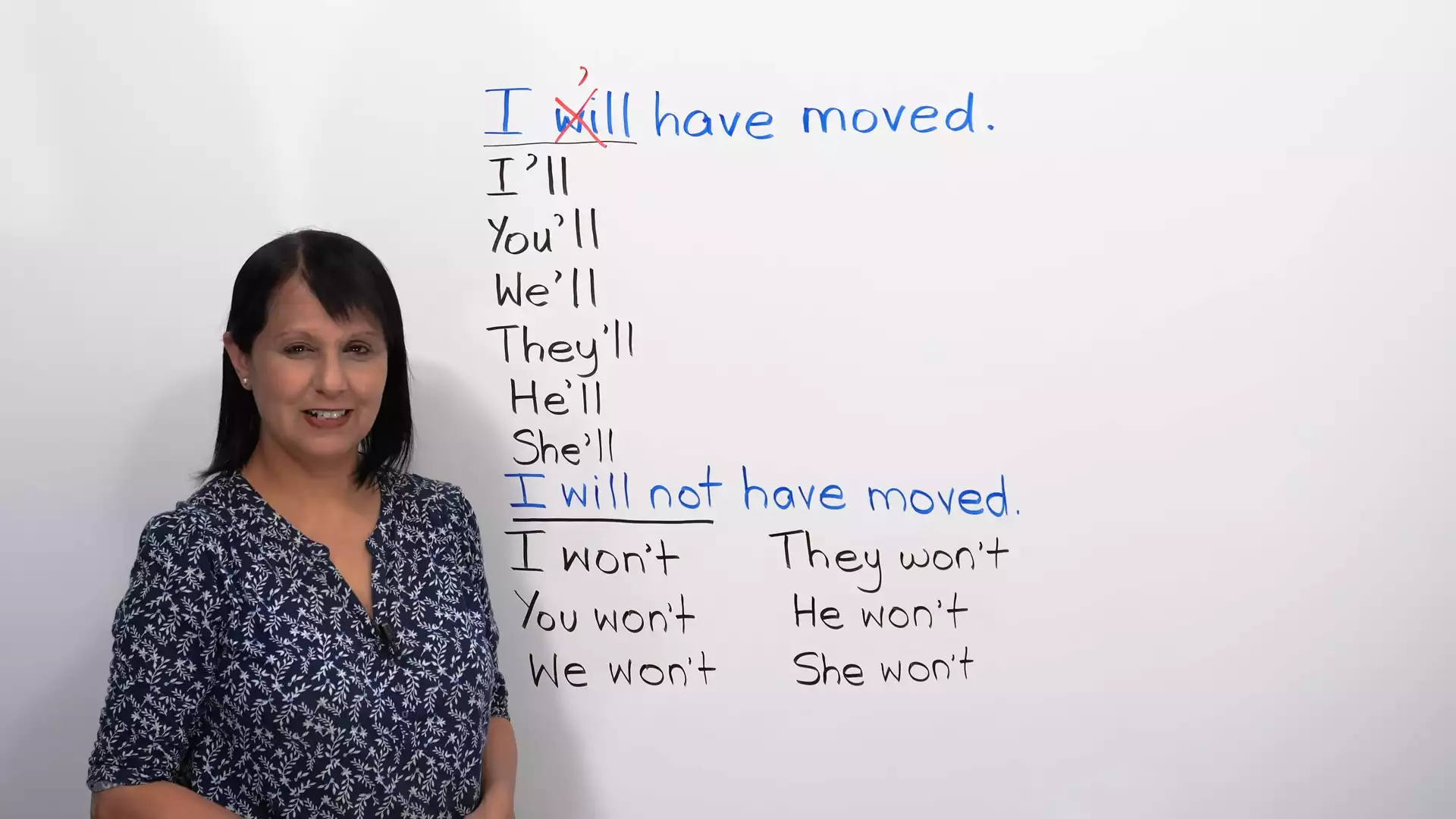
Class Notes
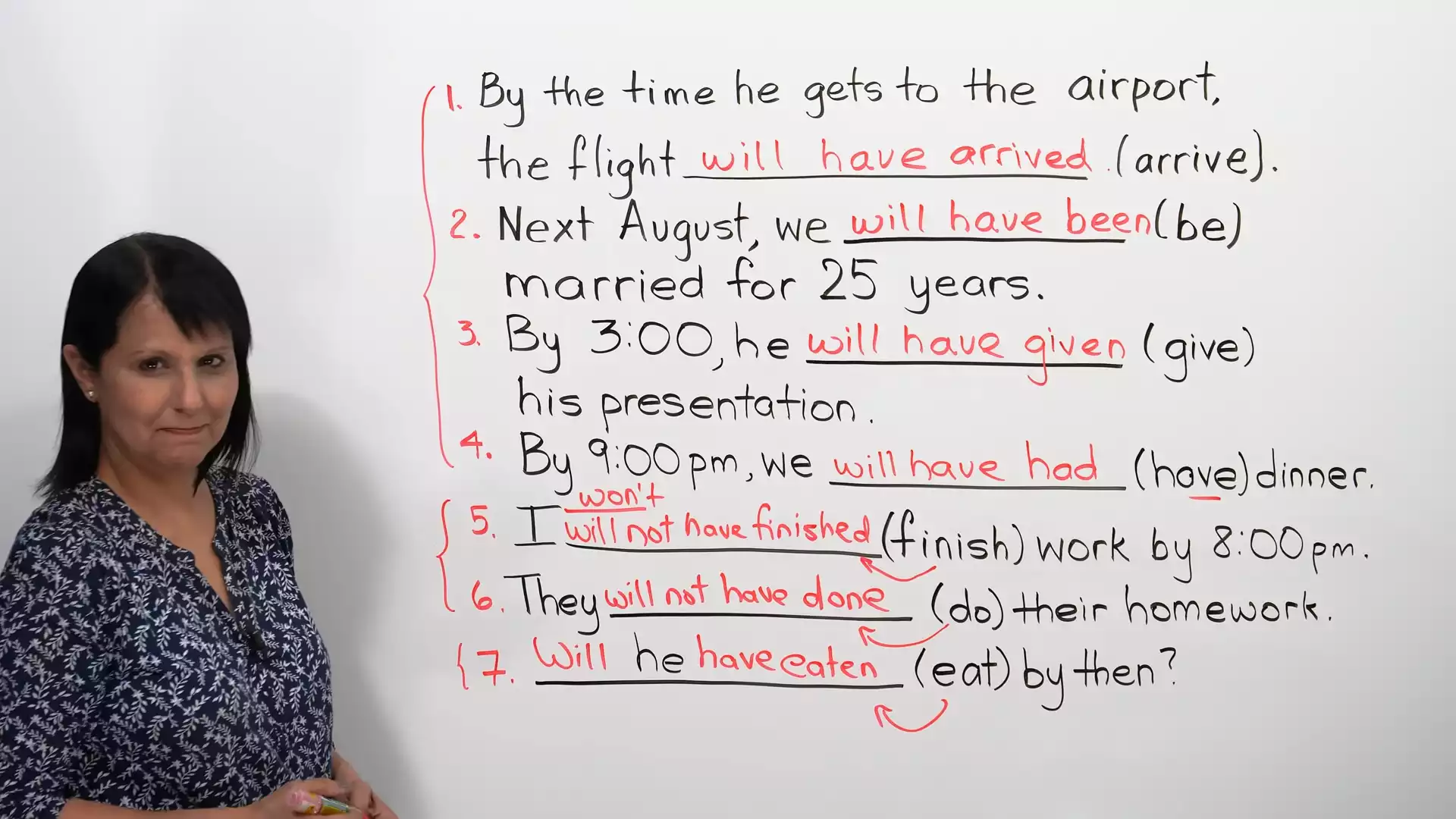
Class Notes

Class Notes
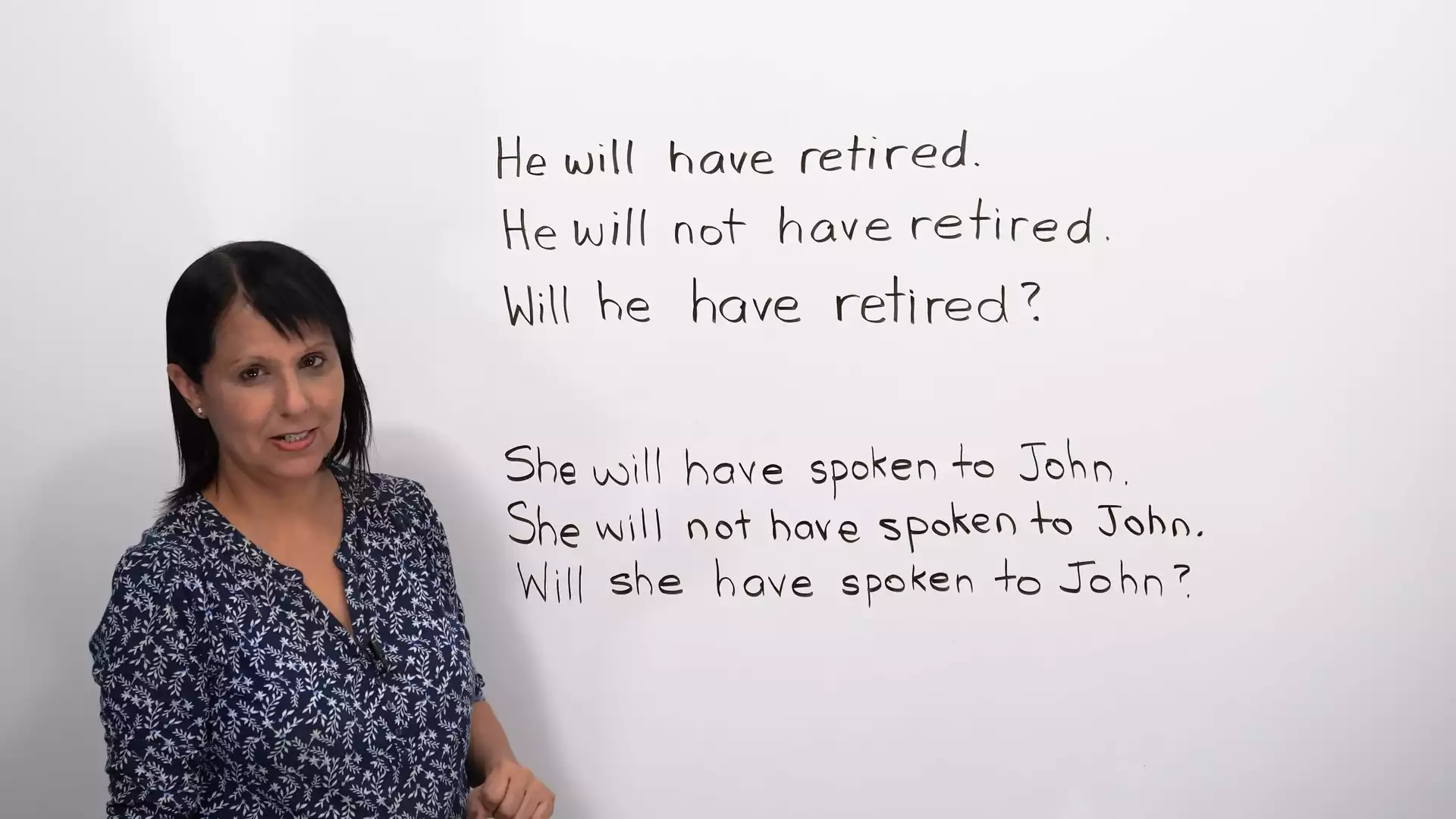
Class Notes

Class Notes
----- END -----

